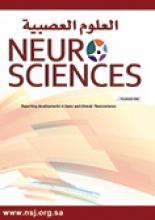Abstract
OBJECTIVE: To use spectral analysis to assess the autonomic activity of epileptic patients compared with normal patients, and to assess the clinical usefulness of the applied methods of signal processing.
METHODS: Forty-eight patients with generalized tonic-clonic seizures and who were not taking any medications, and 48 age and gender matched controls participated in this study from July to September 2007 at Johns Hopkins Hospital, Baltimore, Maryland, and the Medical Center, Cookeville, Tennessee, United States of America. All subjects consented to participate in the research prior to their inclusion in the study, and the local ethics committee approved the study protocol. The study design was to measure peripheral blood flow (PBF) and respiration signals as well as the heart rate variability (HRV) signals derived from the ECG during supine and standing positions.
RESULTS: The results clearly indicate that in patients with epilepsy, the coherence values are less than in the control group in both low frequency and high frequency bands at coherence spectra between HRV and PBF as well as HRV and respiration in both the supine and standing position.
CONCLUSION: Autopower and coherence spectra analysis for patients with epilepsy compared to normal subjects seems useful in the assessment of autonomic function for epileptic patients. Further studies are needed using other tests and methods of signal analysis.
- Copyright: © Neurosciences
Neurosciences is an Open Access journal and articles published are distributed under the terms of the Creative Commons Attribution-NonCommercial License (CC BY-NC). Readers may copy, distribute, and display the work for non-commercial purposes with the proper citation of the original work.






